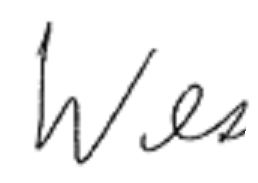Prescript: Memory is fickle. It's been a while since these events, a while since I took her regression course and a while since I've read her papers. One thing I've found is that memories of the contents of particular papers evolves with time, and memory often doesn't line up with actual content. Sometimes my memory is associated with the conclusions I've drawn and the lessons I've learned, not the actual paper content.
Kathryn Chaloner taught the regression course I took in grad school at the University of Minnesota. There was one homework set I thought I had a perfectly good solution to. But I only got an A- on the problem set. Kathryn gave us her analysis of the problem, and, in explaining the grading, said there actually was a variable missing in the analysis. And unless you had that variable you couldn't get it right; or at least we should have concluded that something was missing. So she felt no one deserved an A. Well, we didn't have the variable in the data set, nor even a hint about it, and I was rather miffed over the whole thing. But as you can tell, her claim did stay with me. It's a good attitude for a researcher to have, that something is missing, and to always be thinking about what it might be. And sure enough, over the years, it's been a rare analysis that wasn't missing something or other. Perhaps something the investigator forgot or didn't know to tell you and equally often, there's information that was never collected that you would want or need for the analysis.
In grad school, I read as many papers by the faculty as I could manage or stand. This included Kathryn's papers. The thing is, I read possibly more of her papers and definitely a greater percentage of her output as compared to any other prof. In terms of percentage, probably by a factor of 2 or maybe even 3. Now partly this was because she was a young assistant prof, and it was actually possible to read a large fraction of her work. But also it was because I was interested in her work. I could read it; and the work mattered.
There was her definition of Bayes residual (Chaloner & Brant 1988; Chaloner 1991; Chaloner 1994). I've a doctoral student plotting posterior mean residuals as part of her dissertation right now and I'll be talking about them later this quarter in my Bayesian course.
I never quite got interested in optimal design, but I did think about it; as part of that I read Chaloner & Larntz (1989). I spent a lot of time with that 1989 paper.
For a heavily Bayesian department, Minnesota didn't do much elicitation that I noticed, or even much in the way of prior specification. Kathryn had the two papers with George Duncan (Chaloner & Duncan 1983; Chaloner & Duncan 1987) which I recall liking at the time as well as the later Chaloner, Church, Louis & Matts (1993). I spend quite a bit of time in my Bayes class on specifying priors.
In class I exhort my students that if they're not using a proper, informative prior then they're leaving money on the table. Kathryn's 1987 Technometrics paper was certainly eye-opening. Here was a Bayesian playing a frequentist's game. Putting informative priors on parameters means that Bayes estimators will win by even more.
These papers all influenced me, and at a formative stage of my career. And they're all pretty much still with me, affecting my research and affecting what I teach. And I still think about them; all of them.
Here are the citations. Read 'em. I did. Read 'em and weep if you need to. But, give a cheer also. Cheer for Kathryn and cheer for her accomplishments. This is my cheer for Kathryn. I'll weep in a bit.
Chaloner, K., & Brant, R. (1988). A Bayesian approach to outlier detection and residual analysis. Biometrika, 75(4), 651-659.
Chaloner, K. (1991). Bayesian residual analysis in the presence of censoring.Biometrika, 78(3), 637-644.
Chaloner, K. (1994). Residual analysis and outliers in Bayesian hierarchical models. Aspects of Uncertainty A Tribute to DV Lindley, 149-157.
Chaloner, K., & Larntz, K. (1989). Optimal Bayesian design applied to logistic regression experiments. Journal of Statistical Planning and Inference, 21(2), 191-208.
Chaloner, K. M., & Duncan, G. T. (1983). Assessment of a beta prior distribution: PM elicitation. The Statistician, 174-180.
Chaloner, K., & Duncan, G. T. (1987). Some properties of the Dirichlet-multinomial distribution and its use in prior elicitation. Communications in Statistics-Theory and Methods, 16(2), 511-523.
Chaloner, K., Church, T., Louis, T. A., & Matts, J. P. (1993). Graphical elicitation of a prior distribution for a clinical trial. The Statistician, 341-353.
Chaloner, K. (1987). A Bayesian approach to the estimation of variance components for the unbalanced one-way random model. Technometrics, 29(3), 323-337.





